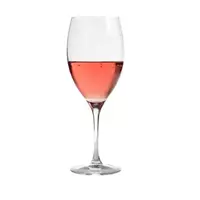Rosé wine

Recently, in addition to traditional white or red wine, such a type of noble drink as rosé has been very popular. This drink is often called "intermediate" or medium between red and white wine. However, this does not mean at all that rosé is somehow inferior to white or red. Indeed, rosé is in the professional classification of winemakers between the white and red varieties of the drink. The French consider themselves the most devoted fans of rosé, as well as other varieties of the popular drink.
This is a completely unsurprising state of affairs, given France's centuries-old winemaking and viticulture history. This country is famous for its magnificent wines, which have earned everyone's love, respect and popularity. A third of the world's rosé volume comes to markets from French Provence or Provence. This historical area is located in southeastern France. At the mention of Provence, most Europeans will develop an association with endless lavender fields, vineyards and rose wine.
Nature itself worked hard to create in Provence simply ideal conditions for the cultivation of grapes and the production of various types of wine. Alpine mountains protect Provence to the east, and the Mediterranean Sea is located to the south. Favorable climatic conditions have a primary impact on the quality of grapes, which have been cultivated for a single century to a row in the territory of Prvoans. It is noteworthy that rosé has at the same time some features of both the red and white appearance of the "drink of the Gods. " For example, the color of rosé wine is closer to red wines.
However, the bouquet of flavors and aromas of rosé wine is incredibly close to the white varieties of the drink. Some believe that rosé is obtained by mixing a red and white drink. This statement is not entirely true, since red and white wine are mixed only to make pink champagne. However, some manufacturers use this technology to make rosé wine. Such a drink is usually classified as non-natural rosé wines. For the production of the so-called natural rosé wine, winemaking uses two main technologies:
direct pressing of black grape varieties;
special soaking technology, in which the wort used to produce rosé wine is fermented together with the already pressed fruits of grapes.
It should be especially emphasized that the technology of making rosé wines is similar to the process of producing white varieties of the drink. The color of rosé wine can range from delicate or light rosés to rich rosés and even reds. For rose wine, grapes such as Caiernet-Sauvignon, Sapervi, Merlot, Jalita, Matras or Traminer are most often used. By the color of rosé, professional tasters and sommeliers can tell a lot about the drink, as well as accurately determine the place of manufacture and the grape variety that was used to produce the drink.
rosé 69 kCal
Energy value of rosé wine (Ratio of proteins, fats, carbohydrates - ju):
Proteins: 0 g (~ 0 kCal)
Fats: 0 g (~ 0 kCal)
Carbohydrates: 6g (~ 24kCal)
Energy ratio (bj | y): 0% | 0% | 35%
 Español
Español Français
Français Português
Português Русский
Русский 简体中文
简体中文 繁體中文
繁體中文 日本語
日本語 한국어
한국어 العربية
العربية Türkçe
Türkçe Қазақ
Қазақ Deutsch
Deutsch Italiano
Italiano Українська
Українська
